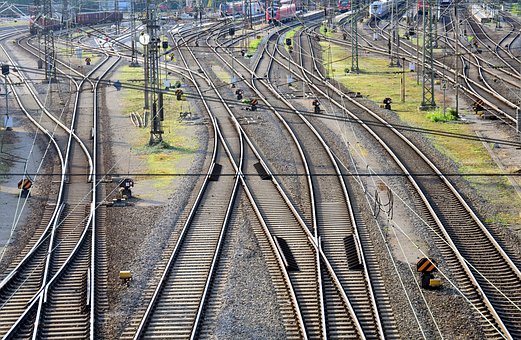“A man who wants to lead the orchestra must turn his back on the crowd.”
— Max Lucado
THE ART OF LEADERSHIP
Turn, Lead, Inspire
Lead Like a Maestro, Focus Where Pure Sound Originates
Picture the concert hall before the downbeat. The maestro steps onto the platform, nods politely, then swivels from the applauding balcony toward the expectant violins. In that simple pivot, he chooses focus over fame. The music will soon thunder, but first comes silence, trust, and the raised baton pointing away from applause.
Leadership behaves likewise. Your Team does not need another showman waving to external critics; they need a guide listening for inner harmony. Turning your back on the crowd means facing the players, watching their breathing, shaping their crescendos. Influence grows not through headlines but through practiced gestures that make ordinary sections sound suddenly symphonic.
So turn today. Trade the mirrors for music stands. Ask your cellists what they hear, tighten one loose string, and rehearse the quiet bars until they shine. When the concert ends, the audience will cheer, unaware that your most remarkable feat was the earlier decision to face the orchestra and let them own the spotlight.
Turn away from distraction, listen closely, elevate your Team’s melody, and conduct excellence through quiet guidance.
COMMERCIAL CONSTRUCTION
Bayou Cement Captures Carbon
Groundbreaking launches first carbon-negative cement mill near Baton Rouge
Steam rose above sugarcane stubble Monday as Bayou Verde Materials, LafargeHolcim, and Louisiana’s governor shoveled wet gumbo clay to mark construction of a $620‑million carbon‑negative cement plant on the humid, marshy Mississippi River Industrial Corridor south of Baton Rouge. The 75‑acre site will grind limestone with captured CO₂ mineralized onsite by CarbonCure reactors.
Aerated slag, bio‑char, and dredged river silt replace energy‑intensive clinker. At the same time, an all‑electric vertical roller mill runs on power from the Plaquemines solar farm and onsite battery storage. Designers aim for a 65 percent reduction in embodied carbon per yard of concrete and anticipate sequestering 780,000 metric tons of CO₂ annually once the project is fully scaled.
Contractor Cajun Industries forecasts 420 union tradespeople onsite at peak, with apprentices sourced from nearby community colleges transitioning from the oil and gas industry. When the plant commissions in late 2027, 160 permanent technicians will earn an average wage of $72,000, while river barges and electrified rail spurs deliver products throughout the Gulf Coast rebuild and hurricane-resilient infrastructure boom.
INFRASTRUCTURE INDUSTRY
Denver Carves Massive Rail Trench
Front Range Passenger Corridor Begins Denver Riverfront Grade Separation Work
Excavators entered South Platte River banks Wednesday as Colorado Department of Transportation and Amtrak officials kicked off construction of the 1.2‑mile Denver Rail Trench, centerpiece of the new Front Range Passenger Corridor. The $980 million project will sink two freight tracks and a future high‑speed pair twenty‑five feet below grade.
Crews will first drive interlocking sheet piles through alluvial sand, diverting the river into a temporary bypass box culvert fabricated upstream. Then, twin roadheaders cut the trench while wireless vibration sensors protect nearby century‑old warehouses poised to become arts venues. A 620-foot, prestressed concrete lid will be installed to restore the riverfront bike trail overhead.
Funding blends a newly signed $400 million Federal‑State Partnership grant, Denver bond proceeds, and freight‑rail user fees that expire once capital is recovered. Builders promise 1,300 union jobs, with forty percent reserved for apprentices from the adjacent Globeville neighborhood. When trains begin rolling in late 2030, commuter trips to Colorado Springs are expected to decrease to 55 minutes, resulting in a 68,000-car reduction in journey time.
RESIDENTIAL RESEARCH
Inflatable Walls Dominate Dakota Builds
Statewide Approval Speeds Concrete Shells, Slashing Cold Winter Housing Costs
North Dakota’s Building Code Council on Tuesday approved VAC‑Form inflatable concrete walls for one‑ and two‑family homes, the first statewide clearance in America. The reusable polyurethane airform inflates inside footing trenches. Ready-mix is pumped between the bladder and outer fabric, producing eight-inch insulated shells without the need for lumber bracing. The rule, effective July 13, reduces plan-review time.
Fargo builder Prairie Peak Homes trial‑poured a 1,700‑square‑foot ranch Wednesday in 27 °F wind, completing the shell in five hours with two laborers. Thermal cameras showed that interior curing stayed above 60°F, eliminating the need for propane tents. Engineers measured a 3,200-psi compressive strength after 18 hours, surpassing the 2,500-psi code threshold.
Prairie Peak expects the system to save $3,400 in lumber, cut fourteen worker‑days, and avoid four dumpster pulls per house. North Star Mutual today promised a three-percent builders’ risk discount, citing lower wind vulnerability. The Bank of North Dakota will treat the monolithic shells as energy-efficient upgrades under its FirstHome loans, thereby boosting borrower limits. Suppliers forecast demand for 150 airforms this quarter across the state.
TOOLBOX TALK
The Importance of Preventing Dust Explosion Hazards
Introduction
Good morning, Team! Today’s toolbox talk covers preventing dust explosions. Dust particles from wood, metals, or concrete can ignite, resulting in severe blasts.
Why It Matters
Dust explosions result in serious injuries, fatalities, and property damage. Recognizing and controlling these hazards is vital.
Strategies to Prevent Dust Explosions
Control Dust Accumulation:
Regularly clean surfaces and equipment to prevent dust buildup.
Proper Ventilation:
Ensure adequate ventilation or dust extraction systems are in use.
Use Approved Equipment:
Select explosion-proof equipment in dust-prone areas.
Avoid Ignition Sources:
Prohibit smoking, open flames, or sparks in dusty areas.
Inspect Regularly:
Frequently inspect and maintain equipment to prevent overheating or sparks.
Discussion Questions
Have you observed excessive dust buildup onsite?
What additional steps can we take to manage dust hazards?
Conclusion
Reducing dust and controlling ignition sources keeps us safe from explosions.
Manage dust to prevent explosions!






